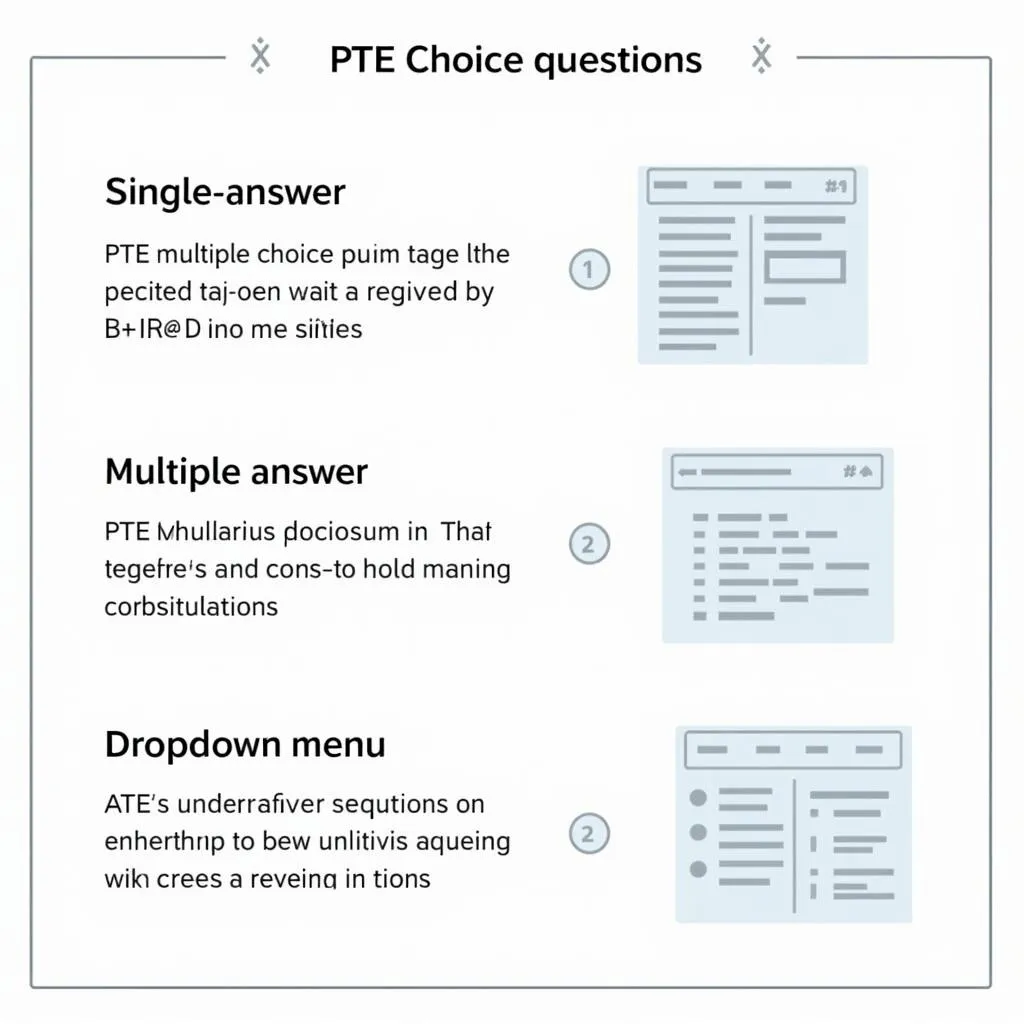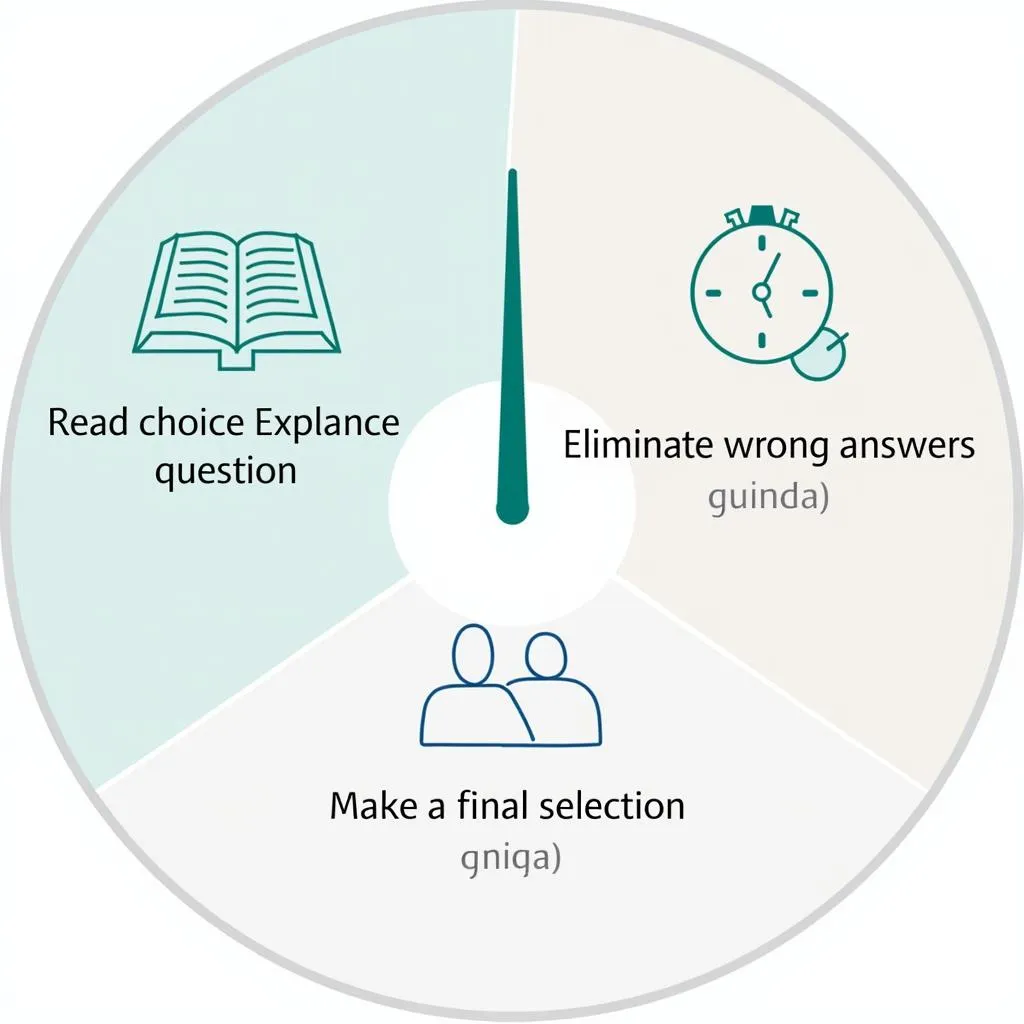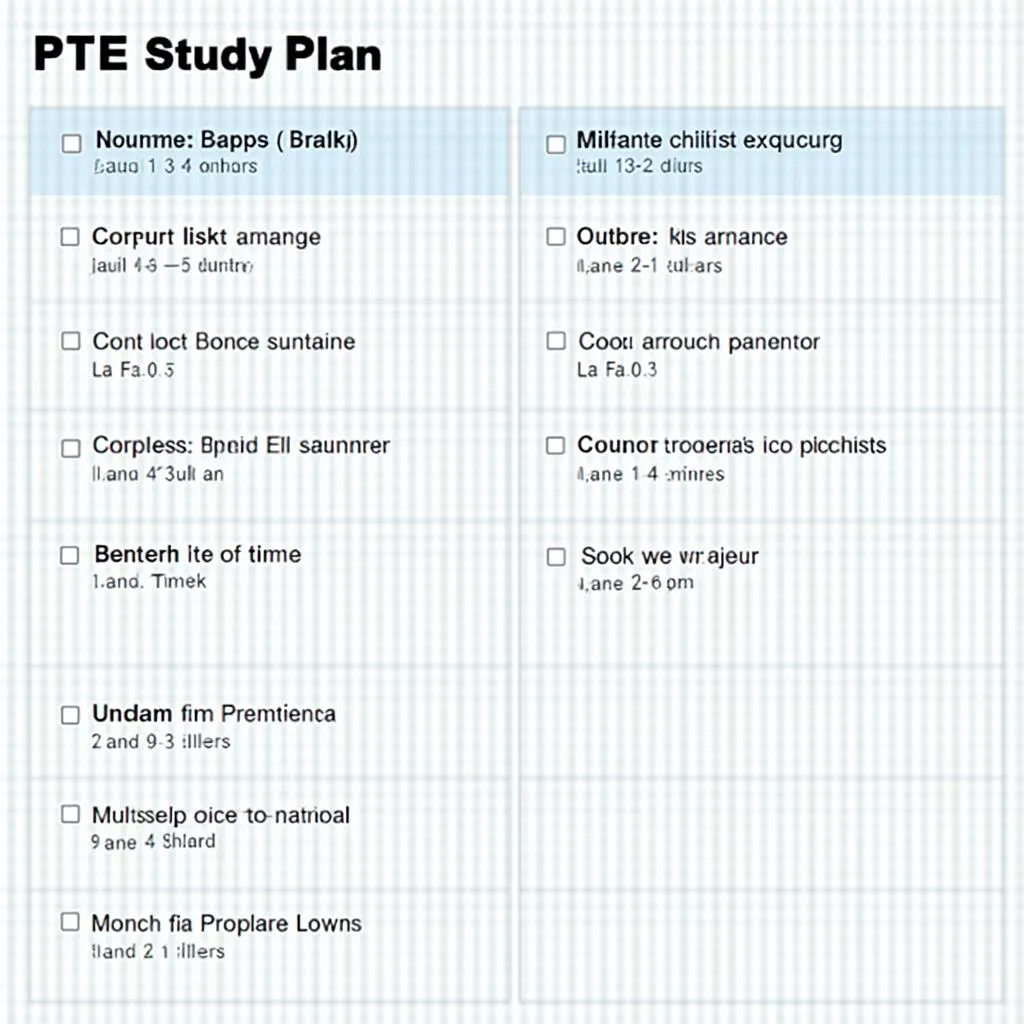Are you struggling with PTE multiple choice questions? You’re not alone. Many test-takers find this section challenging, but with the right approach, you can boost your confidence and improve your score. In this comprehensive guide, we’ll explore effective strategies and provide valuable practice tips to help you excel in PTE multiple choice questions.
Understanding PTE Multiple Choice Questions
PTE multiple choice questions appear in both the reading and listening sections of the test. They assess your ability to understand and analyze information quickly and accurately. Let’s break down the key components:
Types of Multiple Choice Questions
- Single-answer questions
- Multiple-answer questions
- Dropdown menu questions (reading section only)
Each type requires a slightly different approach, but the core strategies remain similar.
 PTE Multiple Choice Question Types
PTE Multiple Choice Question Types
Essential Strategies for PTE Multiple Choice Success
1. Read the Question First
Always start by reading the question carefully before looking at the answer options or listening to the audio. This helps you focus on the specific information you need to find.
2. Identify Keywords
Underline or highlight key terms in the question. These will guide your attention when reading the text or listening to the audio.
3. Eliminate Wrong Answers
Use the process of elimination to narrow down your options. Cross out answers that are clearly incorrect based on the information provided.
4. Watch for Distractors
Be aware of answer choices that sound plausible but are not supported by the text or audio. These are designed to trick you, so stay vigilant.
5. Manage Your Time Wisely
Don’t spend too much time on a single question. If you’re unsure, make an educated guess and move on. You can always come back if time permits.
 PTE Multiple Choice Time Management Strategy
PTE Multiple Choice Time Management Strategy
Practice Techniques for PTE Multiple Choice Questions
To improve your performance, incorporate these practice techniques into your study routine:
-
Timed Practice: Set a timer to simulate test conditions. This will help you improve your speed and decision-making under pressure.
-
Analyze Your Mistakes: After each practice session, review your incorrect answers. Understanding why you made mistakes is crucial for improvement.
-
Expand Your Vocabulary: A strong vocabulary will help you better understand questions and answer choices. Learn how to practice reading speed for PTE to enhance your overall performance.
-
Practice Active Listening: For listening questions, develop your ability to identify key information while the audio is playing. This skill is essential for success in the PTE listening section.
-
Use Authentic Materials: Practice with real PTE-style questions and passages to familiarize yourself with the test format and difficulty level.
Dr. Emma Thompson, a renowned PTE expert, advises: “Consistent practice with a focus on strategy implementation is key to mastering PTE multiple choice questions. Don’t just answer questions; analyze how you approach them.”
Common Pitfalls to Avoid
Be aware of these common mistakes when tackling PTE multiple choice questions:
- Rushing through the question without fully understanding it
- Choosing an answer based on personal knowledge rather than the given information
- Overlooking important details in the text or audio
- Second-guessing correct answers due to overthinking
To steer clear of these pitfalls, check out our guide on PTE common mistakes to avoid.
Integrating Multiple Choice Practice into Your Study Plan
To make the most of your preparation, it’s important to integrate multiple choice question practice effectively into your overall PTE study plan. Here’s how:
- Dedicate specific time slots for multiple choice questions in your study schedule.
- Alternate between reading and listening multiple choice questions to improve both skills.
- Gradually increase the difficulty of practice questions as you progress.
- Combine multiple choice practice with other PTE tasks to simulate the varied nature of the test.
For a comprehensive approach to structuring your practice sessions, learn how to structure practice sessions for PTE.
 Integrating PTE Multiple Choice Practice into Study Plan
Integrating PTE Multiple Choice Practice into Study Plan
Advanced Techniques for Challenging Questions
As you become more comfortable with basic multiple choice questions, try these advanced techniques:
-
Look for Parallel Language: Often, the correct answer will use similar phrasing to the original text or audio.
-
Consider the Overall Context: Sometimes, understanding the broader context can help you eliminate incorrect options.
-
Pay Attention to Qualifiers: Words like “always,” “never,” “sometimes,” or “mostly” can be crucial in determining the correct answer.
-
Practice Inferencing: Some questions may require you to draw conclusions based on implied information.
Professor James Lee, PTE researcher, notes: “The ability to quickly identify and analyze subtle cues in language is what separates high scorers from average performers in PTE multiple choice questions.”
Final Thoughts and Next Steps
Mastering PTE multiple choice questions is a crucial step towards achieving your desired score. By implementing these strategies and dedicating time to focused practice, you’ll see significant improvements in your performance.
Remember, consistency is key. Make multiple choice question practice a regular part of your PTE preparation routine. As you continue to refine your skills, you’ll find yourself approaching these questions with greater confidence and accuracy.
For more comprehensive preparation, don’t forget to explore our PTE listening section strategies and PTE exam tips for last-minute preparation.
Keep practicing, stay focused, and success in PTE multiple choice questions will be within your reach!
Frequently Asked Questions
How many multiple choice questions are there in the PTE test?
The number of multiple choice questions varies in each PTE test, but you can expect around 2-3 in the reading section and 2-3 in the listening section.
Can I change my answer in PTE multiple choice questions?
Yes, you can change your answer as long as you haven’t moved on to the next question or section.
Are there negative marks for wrong answers in PTE multiple choice questions?
No, there are no negative marks for incorrect answers in PTE. However, for multiple-answer questions, you need to select all correct options to receive full marks.
How much time should I spend on each multiple choice question?
Aim to spend about 1-2 minutes per question, depending on its complexity and whether it’s in the reading or listening section.
Is guessing a good strategy if I’m unsure of the answer?
Yes, if you’re unsure, it’s better to make an educated guess than to leave the question unanswered. There’s no penalty for incorrect answers.